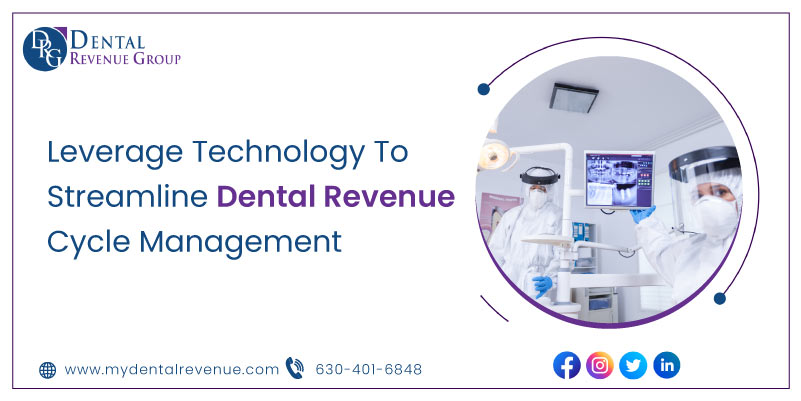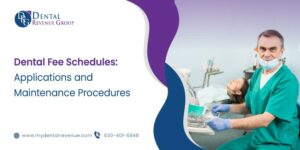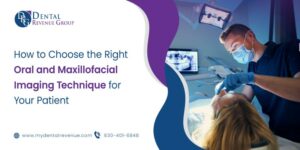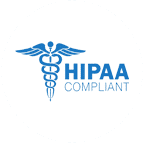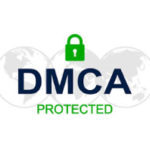Dental practices deal with essential but repetitive tasks that can exhaust even the most committed team members. It is advisable to urge such practices to adopt technological solutions to enhance revenue and streamline RCM processes. These tasks, such as record-keeping and customer service, are vital for a thriving business. However, embracing dental technology and software can streamline these processes and allow the team to focus on what’s most important. This blog will explore how dental technology can benefit your practice and help you more efficiently.
What Is Dental RCM?
Dental RCM is the process of managing revenue from patients and insurance companies. It aims to minimize the time between providing services and receiving payment. It involves identifying, collecting, and managing revenue across all dental business systems. Effective RCM is crucial for maximizing income. Managing patient and insurance revenue is handled differently but is interdependent. Proper management of these processes significantly impacts cash flow.
Importance of Dental RCM for Profitable Dental Practice
Structured Billing Processes
- Airtight revenue cycle management system adds structure to billing processes.
- Standard operating procedures (SOPs) document each step of billing processes.
- Expert handling of billing processes by trained personnel or service.
Maximizing Revenue Collection
- Dental RCM tracks services and collects revenue.
- The mismanaged insurance billing process can result in denials and payment delays.
- Insurance verification, claim submission, and patient collection processes optimized for maximum revenue collection.
Ensures Accuracy
- Optimized RCM ensures that all tasks are completed accurately without any errors.
- Tasks include insurance verification, claims creation and submission, working on insurance aging reports, posting payments, and sending patient reminders.
- Incomplete tasks or errors can result in claim denials and lost revenue.
- Optimized dental RCM completes every task accurately, leading to increased profitability.
Achieve Targets And Goals
- A well-managed revenue cycle gives you an understanding of your current financial state and realistic goals to strive for.
- Analyzing reports and data helps you set targets for your team, increasing their motivation to collect more and bring in more patients.
- Having a common goal that your team understands and works towards encourages better support for one another.
- Outsourcing RCM services to experts can improve your insurance collections and AR reports, increasing the likelihood of achieving these goals.
Embracing Technology for Improved Dental Revenue Cycle Management (RCM)
Leveraging technology in dental revenue cycle management solutions refers to the integration of technology into the financial processes of a dental practice. This can include using software and tools to automate billing, insurance claims, and payment processing tasks. Dental practices can reduce errors and inefficiencies, resulting in faster payments and increased revenue by utilizing technology. For example, automated billing software can send invoices and reminders to patients, reducing the likelihood of missed payments. Machine learning algorithms can also analyze payment trends and predict which patients may be at risk of non-payment, allowing the practice to address payment issues proactively. Ultimately, leveraging technology in dental RCM solutions can improve the financial health of a practice, increase staff productivity, and enhance the patient experience.
Challenges Faced by Healthcare Providers in Revenue Cycle Management
Healthcare providers are facing downward pressure on reimbursement and yield across the country. The revenue cycle is becoming costlier for most healthcare systems. Organizations expect their RCM teams to improve performance and reduce costs in this challenging environment. Healthcare organizations in the US have faced new obstacles to revenue cycle management (RCM) performance over the past five years. Although the Affordable Care Act (ACA) decreased the number of uninsured individuals, there has been an increase in complexity in other areas. Three underlying trends are the primary drivers of this complexity: shifts in payment responsibility and bad debt, changes in payment requirements, and heightened administrative burdens. These trends have created significant challenges for the revenue cycle where care is delivered.
Technological Solutions To Resolve Dental RCM Challenges
Technology plays a crucial role in streamlining the various stages of dental RCM. Practice management software can automate the scheduling and billing processes, while electronic claims submission can reduce the time spent on claim creation and submission. Automated payment posting can also simplify the process of recording and reconciling payments. Additionally, patient engagement tools such as text and email reminders can improve patient collections. Other solutions include:
Practice Management Software
Practice management software can streamline the administrative burden by automating many routine tasks. This includes appointment scheduling, insurance verification, and patient registration.
Electronic Claims Submission
Submitting claims electronically can minimize errors and expedite the reimbursement process. Claims are submitted and processed faster, reducing the time and effort required for follow-up.
Online Scheduling System
Online scheduling systems typically have a user-friendly interface allowing users to view available appointment times and select the best time for them.
Automated Payment Posting
Automated payment posting can improve accuracy and save time. When payments are automatically posted to the patient’s account, there is no need for manual entry, which can lead to errors.
Patient Communication Tools
Patient communication tools like text and email reminders can help improve collections by reducing no-shows and encouraging patients to pay their balances. These tools, such as online portals or mobile apps, can also provide patients with convenient ways to pay.
Using these technological solutions can help dental practices overcome revenue cycle management challenges and improve efficiency, accuracy, and profitability.
Benefits of Technology in Dental RCM
Here are a table outlining the benefits of leveraging technology in dental RCM:
|
Benefit |
Description |
| Reduce Administrative Burden | Automate administrative tasks such as appointment scheduling and claims processing |
| Improve Billing Accuracy | Verify insurance coverage, identify coding errors, and submit claims electronically. |
| Optimize Revenue Cycle Workflows | Provide real-time data insights to identify and address issues quickly |
| Enhance the Patient Experience | Allow patients to schedule appointments, access medical records, and communicate with providers more easily. |
| Increase Efficiency and Revenue | Reduce administrative costs, improve billing accuracy, optimize revenue cycle workflows, and enhance the patient experience. |
Best Practices for Implementing Technology Solutions for Dental RCM
Assess Your Current Processes
Before implementing any technology solutions for dental revenue cycle management (RCM), it’s crucial to assess your current processes and identify areas where technology can significantly impact them. This assessment should include an analysis of your existing revenue cycle management workflows, software systems, and data management processes. Some areas to focus on may include:
- Claims processing and submission
- Patient registration and check-in
- Payment processing and collections
- Insurance verification and eligibility checks
- Coding and billing accuracy
- Denial management and appeals
- Patient communication and engagement
By assessing your current processes, you can identify areas where technology solutions can improve efficiency, accuracy, and revenue.
Choose the Right Technology Solution
Once you’ve identified the areas where technology can make a difference, it’s time to choose the right technology solution for your dental practice. Here are some key factors to consider:
User-Friendly:
Choose a solution that is easy to use and easily integrated into your existing workflows. It may create more problems than it solves if it’s too complicated to use.
Integration:
Look for a solution that can integrate with your current software systems, such as your practice management software, EHR, and billing software. This can help streamline your workflows and reduce the risk of errors.
Real-Time Data Analytics:
Choose a solution that provides real-time data analytics, so you can monitor key performance indicators (KPIs) and make informed decisions about your revenue cycle management processes.
Security:
Make sure the technology solution you choose has robust security measures to protect patient information, such as data encryption, user authentication, and secure data storage.
Customer Support:
Look for a technology provider that offers reliable customer support, so you can get help if you encounter any issues or need assistance with the software.
Implement Change Management Strategies
Implementing technology solutions for dental RCM can significantly change your practice. It’s important to develop and implement change management strategies that address potential resistance to change and ensure that staff is trained and prepared to use the new technology.
Monitor and Evaluate Performance
Once you’ve implemented technology solutions for dental RCM, monitoring and evaluating performance is important to ensure you achieve your goals and objectives. This may involve tracking key performance indicators (KPIs) such as claims processing times, denial rates, and revenue cycle metrics and adjusting as needed to optimize performance.
By following these best practices, you can successfully implement technology solutions for dental RCM and improve your dental practice’s efficiency, accuracy, and revenue.
Conclusion
According to a study by the American Dental Association (ADA), implementation of technology solutions in dental RCM has steadily increased over the past few years. In addition to EHRs and other technology solutions such as online scheduling systems, revenue cycle analytics tools, and patient portals have also been shown to impact dental RCM positively. The adoption of technology solutions is steadily increasing in the dental industry, and practices that implement these solutions are likely to see positive results.

